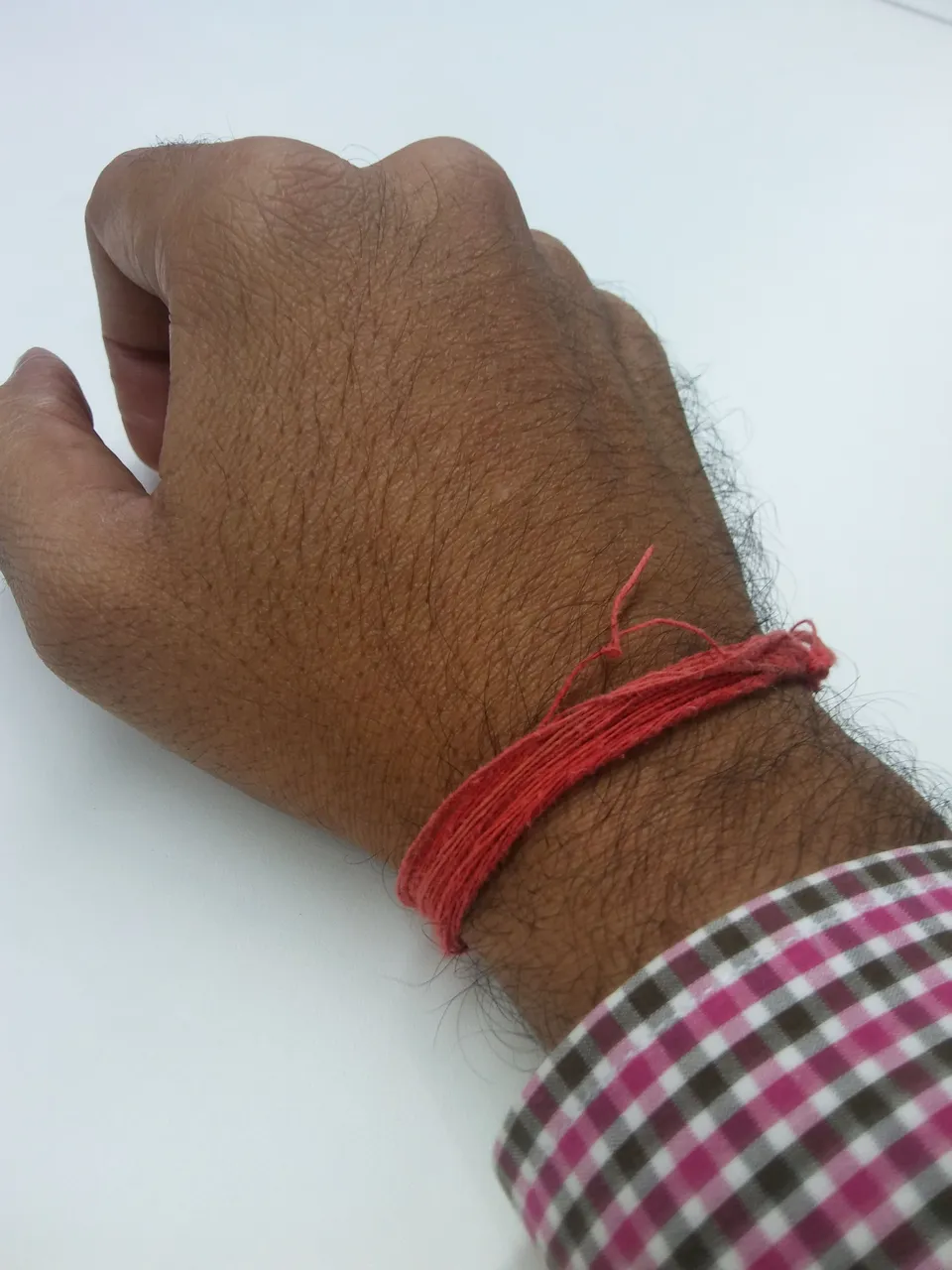Kalava / Moli, Protects you, Safeguards you, from all adversity and destruction.
A Red colour thread tied on your wrist can do all these things?? Well, being a true God believer, I am not raising any question neither I am getting into an argument of the pros and cons and nor judging the authenticity. The main purpose of writing this is to enlighten the true meaning of tying Kalava / Moli in the hands. A practice which is very popular in India.

Hinduism, is a religion with many beliefs and faith. We often used to perform many Pujas and Yajna for the betterment and welfare of the family and ourselves for growth and prosperity. A very common practice that is followed before any Puja and Yajna is tying a Red thread into our wrist, the Red thread is "Kalava" and also known as "Moli".
Recently, I noticed many Red threads among my colleagues and friends’ hands, not to surprise I have one too. I am pretty sure the festival of lights Deepawali has recently concluded and everyone had performed Puja's at their respective home like I had:

I have asked many individuals, colleagues and friends, the purpose of tying the red thread and I got amazing replies, some of them even out of my mind:
Mr.A : It helps you purifying the body before the Puja.
Mr B : It is a Sign for others, that we performed Puja.
Mr C : To make lord Sun more stronger for the prosperity.(astrology)
Mr D : A solemn vow (sankalp) to complete a task
Not convinced with any of the above answer, and out of curiosity to understand the true meaning, I went to the local priest to explore the possibility. The priest started with a mantra:
Yen Badho bali raja danvedro mahabalah
Ten tvamanubadhnaami rakes maachla maachla
And after that told me a long mythological story, about king "Bali" and the "demons". Well it is pretty hard to explain the entire story , it is better to have google it. :)
Finally i reached to a conclusion, Kalava is tied on the Right wrist of men and unmarried women and Left wrist of married women. A human being is influenced by 3 Gunas (quality), (1) the Passion, (2) the Darkness and (3) the Purity. Human mind is always been occupied with these Gunas. Now and then the desire keep disturbing human activity. While performing Puja/Yajna, the humans were also occupied with these 3 Gunas. The thread on the wrist before the Puja's and Yajna help to control the mood swings during Pujas. The thread is tied to make the worshipper not to move in any condition until the Puja is completed. Basically it is the Vow taken before the Puja/Yajna to complete the task without any break in between.
After priest confirmation, I took Mr D : A solemn vow (sankalp) to complete a task as my final answer.
Well in this endeavour to look for the best answer I had pretty much experience of religious beliefs occupied in different Indians. At last, I reached to some answer. :)
Thanks